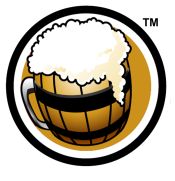Hops
|
Amount
|
Variety
|
Cost
|
Type
|
AA
|
Use
|
Time
|
IBU
|
Bill %
|
|
1 oz |
Sterling1 oz Sterling Hops |
|
Pellet |
8.7 |
Boil
|
60 min |
32.78 |
50% |
|
0.30 oz |
Hallertau Mittelfruh0.3 oz Hallertau Mittelfruh Hops |
|
Pellet |
3.75 |
Boil
|
15 min |
2.1 |
15% |
|
0.70 oz |
Hallertau Mittelfruh0.7 oz Hallertau Mittelfruh Hops |
|
Pellet |
3.75 |
Boil
|
5 min |
1.97 |
35% |
|
2 oz
/ $ 0.00
|
Mash Guidelines
|
Amount
|
Description
|
Type
|
Start Temp
|
Target Temp
|
Time
|
|
|
Ferulic Acid Rest |
Infusion |
-- |
110 °F |
10 min |
|
|
Step 1 Beta |
Infusion |
-- |
152 °F |
20 min |
|
|
Step 2 Beta |
-- |
-- |
157 °F |
60 min |
|
|
Mash Out |
Temperature |
-- |
168 °F |
15 min |
|
|
Batch Sparge |
Sparge |
-- |
168 °F |
15 min |
Starting Mash Thickness:
1.5 qt/lb
|
Target Water Profile
Boston, MA
Notes
What do you get when you brew a dark saison with rye, several kinds of wheat and honey? A dark "bière de miel," of course. I mean, it seemed pretty obvious to me. Sit down and get educated. Seriously, this isn't too complicated. We're not pioneers, we just like ruining good things.
Pat and I unabashedly love dark saisons. Considering we're both awful people, this should come as no surprise. Regardless, the intrigue level of this style is nearly unparalleled considering the insanely tiny quantity of commercial examples of it that have been brewed, and we usually think they're interesting. Unlike the black IPA, which has actually become a codified style (for whatever stupid reason), the dark saison is forever a mysterious, roguish beast lurking on the elusive yet surprisingly-coherent corners of spice, roast and herbaceousness.
And then we go and add honey and mess up the whole balance. What monsters we must be.
————————
Malts: Pilsner, white wheat, midnight wheat, rye, Carafa II
———
Hops: Sterling, Hallertau mf., Strisselspalt
———
Yeast: WLP566 (Belgian Saison II)
———
Other ingredients: Honey
————————
2/3/18: Finally bottled this one today. That makes this about a three week primary, which kinda follows the idea that saisons and farmhouse-style ales take longer to ferment and typically like higher temps.
It tastes great from the sample we took to check final gravity, though. A couple weeks ago, it was tasting a little sulfuric and too yeasty, but those elements seem to have cleared out. What we ended up with is pretty much exactly what I envisioned when the idea first came into my head. Strong spice elements from the rye and yeast, along with some clove-like phenols due to the 4VG/ferulic rest we opted to include in the mash. Slight sweetness in the mid palate which combines nicely with a roasty note and slight herbal hoppy note in the finish of each small sip. Can't wait to try it once it's fully conditioned and carbonated. I think we have another successful experimental recipe under our belts.
2/21/18: Alright, I first had a fully-conditioned bottle of this the other day (2/17 to be exact) and it really hasn't changed at all so let's just call this 100% complete.
Pours a deep brown color. There are some lowlights if this is held up the direct light, but since it's mostly opaque (unfiltered and bottle-conditioned), I can't really tell if we nailed the SRM we wanted or not... I bet we did, though, if the garnet color towards the bottom of my glass is any indication. A nice one-finger of head builds up, a sort of khaki color with anonymous wispy lace as it sips. Hazy, obscure surface. Looks pretty great.
So, the intention of this beer was obviously to make a dark farmhouse ale first and a "honey beer" second... in fact, "bières de miel" are not typically supposed to be sweet, as one would assume, since the honey is fermented out, leaving only suggestions of its application in the final product. Therefore, just saying this was "brewed with honey" seems almost like a mischaracterization of the entire aim. We used two different kinds of honey (wildflower and buckwheat) to achieve a balance between the spice, rustic and floral notes we wanted to come across in the final product.
Strong spice notes and rustic elements really come out upon my first few sniffs. Since both Pat and I really love rye, we thought we could utilize its uniqueness well in this recipe. I'm surprised it's as apparent in the nose as it is, given that it's less than 10% of the grist, but the clove also comes out a lot. We utilized a 4VG rest to better bring out the natural clove resultant from the yeast we chose, and it seems to have worked very well. There are some light notes of molasses, brown bread, herbal hops and honeyed toast in here as well.
The profile has a solid foundation of roasty malts and toasted bread, before lingering honey and grassy hops finish out each sip. Interesting spice notes give way to a snappy, light bitterness. The body is rather rich and, given that this is in the low-mid 8% realm, that fullness makes a lot of sense. The finish, however, is almost drier than expected, though it does retain a kiss of sweetness, almost like a parting gift from the honey. I really like this recipe and hope we can return to it and dial it in slightly at some point. It is nearly "commercial-level" in execution, already, though, and I think this recipe-handling speaks of our accomplishments as homebrewers. It goes without saying, then, that I'm proud of this beer.

Last Updated and Sharing

- Public: Yup, Shared
- Last Updated: 2018-04-05 19:56 UTC
For quick copying and pasting to a text based forum or email.
Click the Download as HTML file button below.
Recipe costs can be adjusted by changing the batch size. They won't be saved but will give you an idea of costs if your final yield was different.
|
Cost $ |
Cost % |
| Fermentables |
$ |
|
Steeping Grains
(Extract Only) |
$ |
|
| Hops |
$ |
|
| Yeast |
$ |
|
| Other |
$ |
|
| Cost Per Barrel |
$ 0.00 |
|
| Cost Per Pint |
$ 0.00 |
|
| Total Cost |
$ 0.00 |
|
Discussion about this recipe:
